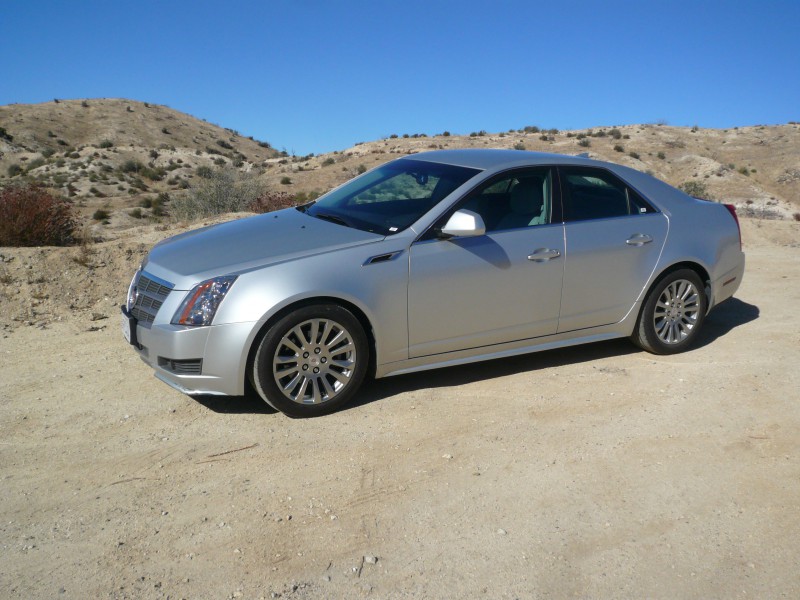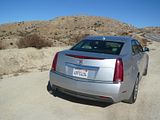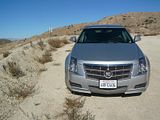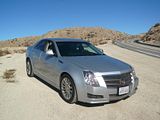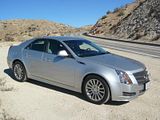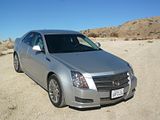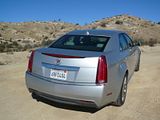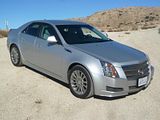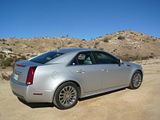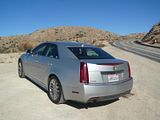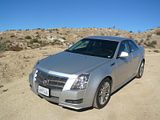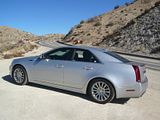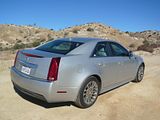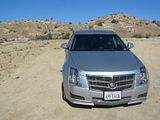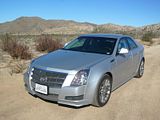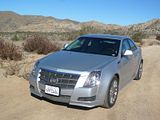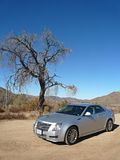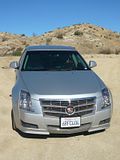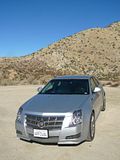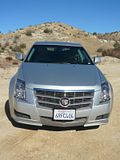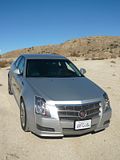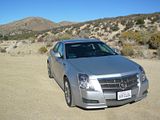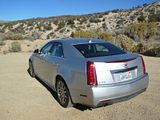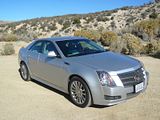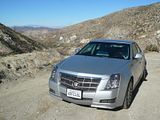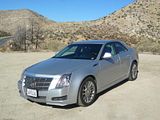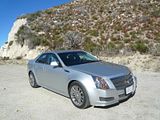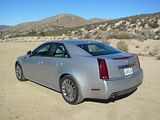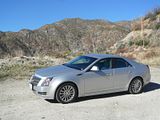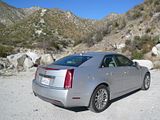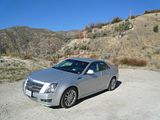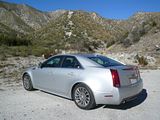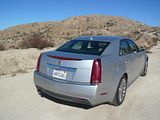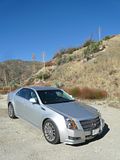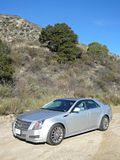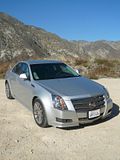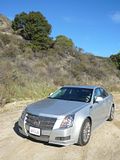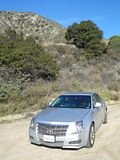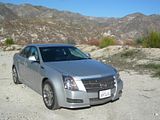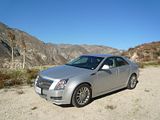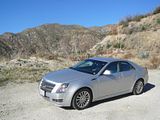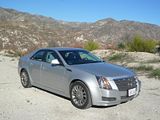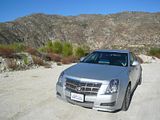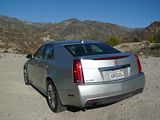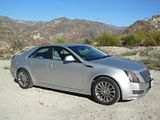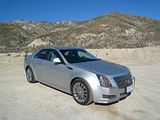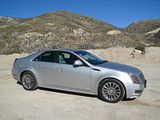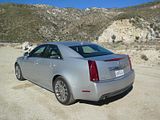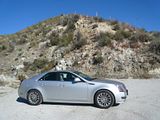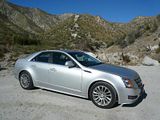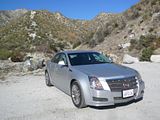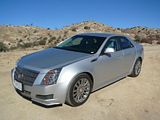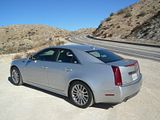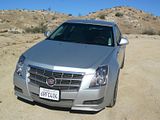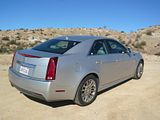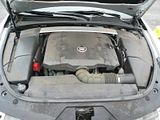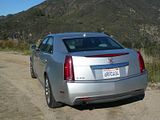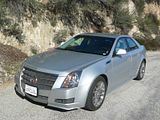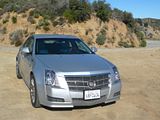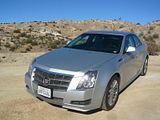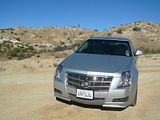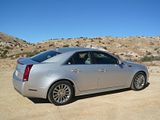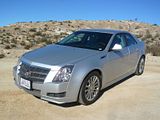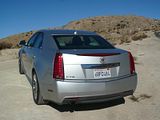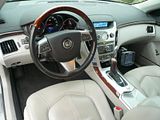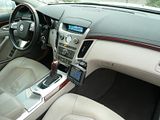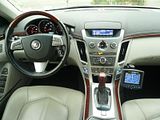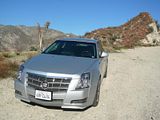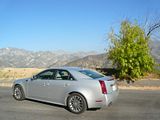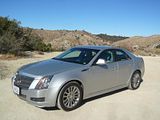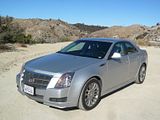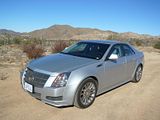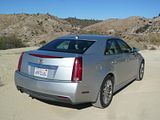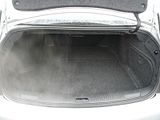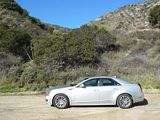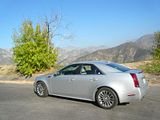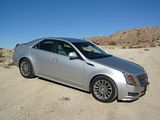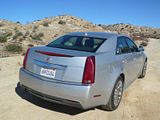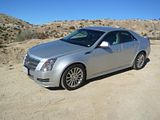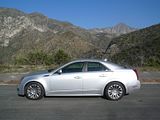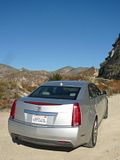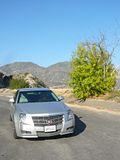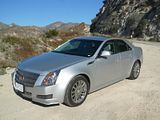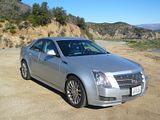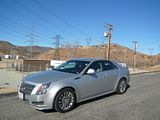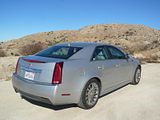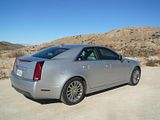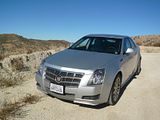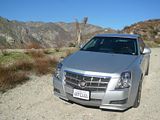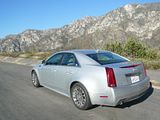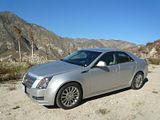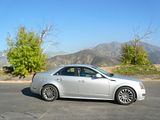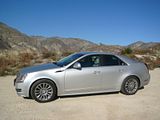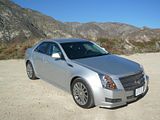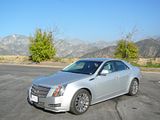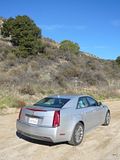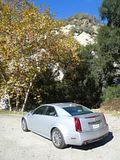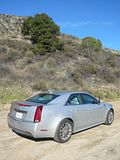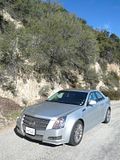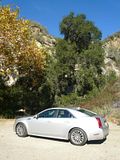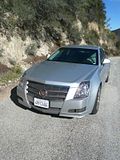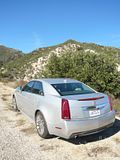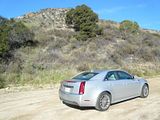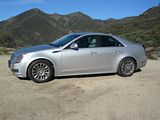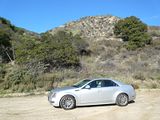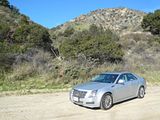By the turn of the twentieth century, Cadillac had something of a problem. This once proud marque, renowned for building high quality cars, once notable for being among the best in America, seemed to have lost its way, producing a series of luxury sedans with appeal largely confined to the superannuated owner who had been brand loyal for many years. Not really a recipe for continued sales success let alone growth. Attempts to appeal to a wider market by bringing in smaller models from the GM stable, with minimal changes to turn them into a Cadillac, the J-car based Cimarron and the Omega based Catera were no help at all, as neither car set the sales charts on fire. And then in 2002, Cadillac showed a very sharply styled mid-sized luxury sports sedan with rear wheel drive, the CTS, which seemed to be exactly what was required. Initial reviews were good, the car won the North American Car of the Year award and sales took off, averaging between 40 to 55,000 a year. A second generation model appeared in 2007, for the 2008 model year, and this time the reviews were even more glowing, winning Motor Trend’s Car of the Year 2008 award and featuring in Car& Driver’s “Ten Best”. Ever since then, many in the American press have declared not only that this was a car to take on the established German competitors in this market segment, but that it actually beats them. Having tried to relaunch the Cadillac brand in Europe with the first generation CTS and achieving negligible sales, yet another relaunch came with this second generation car, with some very optimistic sales targets indeed. Noting not just a paucity of dealers but the critical absence of a diesel engine or even a small enough petrol with low CO2 ratings, it should come as no surprise that European sales have been utterly pathetic, struggling to get into double figures in the course of a year in the UK. Lacking the necessary ingredients to compete in Europe does not make a car innately bad, though, so I was pleased to locate a CTS in the Hertz LAX facility to get the chance to sample the car in its home market to see how indeed it really stacks up against its strongest European rivals, the 5 series, A6, E Class and Jaguar XF.
Whilst the first generation CTS was only offered as a 4 door sedan, the second generation range has expanded to include an estate and a rather rakish 2 door Coupe. Halo models at the top of the range are the 556bhp CTS-V cars, but these are low volume models even in America, and it is only the regular models that feature in the rental fleets. Entry level cars come with a 3.0 litre V6 engine which puts out 270 bhp, and are available in four different trims: Base, Luxury, Performance and Premium. There is also a 3.6 litre V6 which puts out 304 bhp, available in the Performance and Premium trims. All Wheel Drive is an option on all models. My test car was a 3.0 Luxury model. It is a quiet and refined unit, though it lacks anything to make it feel particularly special. It does not deliver anything very special either needing to be provoked quite hard to deliver a rush of acceleration, though once underway it goes about its business of responding to the requests of your right foot without any fuss or drama. Although a manual gearbox is standard on the 3.0 litre cars, the test car featured the six speed automatic gearbox, which offers a choice of Sport or Normal modes. Gears change very smoothly indeed, with little evidence apart from a change in the revs to indicate which gear you are in. I was sometimes quite surprised when flicking the lever into the manual mode to find that the CTS was actually in a lower ratio than I would have thought, thereby confirming the engine’s refinement. Fuel economy was not a particularly strong suit. I averaged 23. 4 mpg US (that’s 27.95 mpg Imperial) over a test distance which combined a mix of freeway cruising and some time spent in the mountains.
The steering felt just that bit sticky, lacking the fluency that you hope for and indeed expect in a car of this class, or indeed any class. At least it was not overlight, having some feel, and the stickiness reduced as you turned the wheel some more, but It did have decent feel and you had a reasonable idea of what the wheels were going to do. Unlike Cadillac’s larger models of recent times, the CTS is rear wheel drive and this should make it “fun” to drive on twisty roads. I took it up into the canyons up above Los Angeles and have to say that “fun” seemed a bit lacking. It went round the bends OK, without undue understeer or any significant body roll, but I don’t think that this car will get the enthusiast vote if that person is used to the charms of a 5 Series or an XF. The suspension is quite soft and that translates into a compliant ride. This is no bad thing in California where the road surfaces are pretty poor, though ironically those on the canyon roads are generally better than the freeways down in the valley. There were no issues with the brakes. There is a foot operated parking brake, which is released by pulling a handle on the lower left of the dashboard. Visibility was generally good, and the Luxury trim brings with it a reversing camera which projects a view of what is behind the car onto the rear view mirror, so you can see clearly how much space you have when manoeuvering.
Whilst the dynamics get quite close to the dread European rivals, you only have to open the door and look inside the cabin and you will either conclude that the CTS’ designers never bothered to look at the competition and came up with their view of what a premium interior should look like, or if you are feeling charitable, you have to believe that they did look at the rivals and decided to do something different believing it was what buyers would want. It certainly exemplifies the differences in taste that are apparent in markets around the world. This may well appeal to a certain category of American buyer, and indeed one review site I read observed “Luxury-grade trim rivals the best in this highly competitive class” but for anyone who likes the interior of an Audi, they will just hate this one. For a start there are more materials and textures than you can shake the proverbial stick at: the top of the dash is dark grey, there are lots of rather nasty wood inlays, the main dash moulding is mid grey, and there are lashings of silver plastic and chrome rings and there is plenty of “stitching”. The leather seats in the test car were yet another shade of grey. It all looked rather too brash, which is exactly the image that Cadillac had and I had assumed was trying to foresake, certainly if they want to appeal to Europeans. And that’s before you look at the details, which really don’t improve matters. There are three deeply recessed chrome-ringed dials under a single binnacle. The central one, the speedometer, is the largest, with a rev counter on the left and a dial combining fuel gauge and water temperature are to the right. They are all easy enough to read. The column stalks are from the GM parts bin. Thankfully those awful ones where you had twist the end of the indicator stalk for the wipers have gone and the ones fitted now feel solid and are good to use. You also get a GM standard issue audio unit, which had a touch screen, which made it easy to use. The centre of the dash contains two long and thin air vents which sit on either side of the display for the audio unit, which appears to be topped by a cover that might lift, but does not. Below this is a circular analogue clock, a significant number of buttons for the audio unit and then in a lower layer another collection of buttons for the climate control system. Separate buttons for the heated seats are on either side of the lower part of the console. To the left of the wheel on the dash are a series of buttons to switch functions from trip computer to average speed, fuel consumption etc, as well as things like oil life, tyre pressures etc. There are several different buttons, and to cycle between the displays you need to press different ones from those to select the sub-menu to start with, and you can’t see any of them as they are well hidden behind the wheel. With this exception, everything else is all quite easy to use, but is a case of form probably taking precedence over function.
The rear seat seemed comfortable from my brief test sitting on it. Despite the sloping roofline, occupants should not find their head brushing either the headlining or the rear window. Even with the front seats set well back, there is reasonable leg room and there should be enough shoulder room for three adults to occupy the seats for longer than just a short journey. The boot proved to be surprisingly small, lacking the vast cavern that you find in an A6, a 5 Series or an E Class. It is much shorter than all those cars, perhaps a consequence of the relatively stubby tail. There is a load-through flap which goes through the rear armrest for some extra length for skiis. Not only is the boot small, but I noted that the surface under the rear parcel shelf and the trailing edge of the boot lid were very poorly finished not just with lots of painted metal, but spikes and bolts all showing. There is no external release for the boot, so the easiest way to get in was to press the release button on the key fob. Inside the cabin there are some very pokey door bins, a decent sized glovebox and some stowage space under the central armrest.
Even the Base models are quite well equipped, featuring 17″ alloys, 8 way power adjustable seats, an AM/FM/XM Satellite/CD/MP3 audio unit, OnStar, automatic headlights and dual zone climate control. Luxury trim adds the wood/leather steering wheel, the wood trim, heated leather seats, 10 way power adjustment for the front seats, the rear view camera, memory seats and an upgraded audio unit. Performance models delete the wood and leather trim, but introduce sports suspension, 18″ alloys, adaptive headlights, an upgraded Bose audio unit and a choice of the 3.0 or 3.6 litre engine. Top spec Premium models come with the 3.6 litre engine and also bring keyless starting, an upgraded Bose audio unit, a rear obstacle detection system, ventilated seats, the wood trim, an electric sunroof, a powered adjustment for the steering column, a navigation system and folding rear seats. Where CTS scores, is in its pricing, with a Luxury model like my test car listing (when new) for $38,400. Cheapest CTS starts at $35,345 and the top spec 3.6 Premium in AWD format listing at $49,700.
I am afraid that I ended up rating the CTS much like all other Cadillacs I have driven: promises much, but ultimately disappointing. There’s nothing that particularly makes this a Bad Car, but nor is there anything much that shines. That GM (and much of the clearly rather xenophobic American motoring press) thought not only that this car was a credible rival to the German trio of A6, 5 and E, as well as the Jaguar XF shows a level of delusion matched only by the ridiculous sales forecasts that they had for the car in Europe. Outside the home market, I cannot imagine for one moment why you would choose one of these, and indeed after a flurry of a couple of hundred cars being sold in the UK, everyone agreed with me and sales fell to something like 10 cars a year. The absence of dealers and a diesel engine are undoubted market killers in Europe, but even ignoring these factors, it is a clear also-ran. A new CTS is coming – a launch at the 2013 New York Auto Show was being openly declared at the recent LA Show – and it will need to find something special to pull it into clear water over its competitors. I do hope Cadillac can find what they need to do. And do it.

